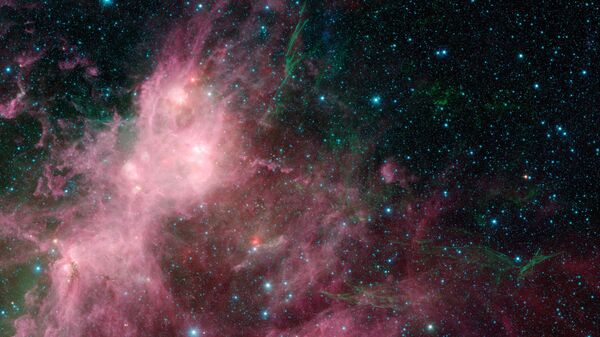https://sputnikglobe.com/20201110/the-milky-way-hosts-300-million-potentially-habitable-planets-says-new-nasa-study--1081115722.html
The Milky Way Hosts 300 Million Potentially Habitable Planets, Says New NASA Study
The Milky Way Hosts 300 Million Potentially Habitable Planets, Says New NASA Study
Sputnik International
The research was based on data provided by the Kepler space telescope, which examined the universe for eight years. Launched in 2009, Kepler's goal was to find... 10.11.2020, Sputnik International
2020-11-10T12:23+0000
2020-11-10T12:23+0000
2020-11-10T12:24+0000
https://cdn1.img.sputnikglobe.com/img/107881/92/1078819205_0:160:3073:1888_1920x0_80_0_0_5d8915f14ffc49569a8369c67fc973b7.jpg
Sputnik International
feedback@sputniknews.com
+74956456601
MIA „Rossiya Segodnya“
2020
News
en_EN
Sputnik International
feedback@sputniknews.com
+74956456601
MIA „Rossiya Segodnya“
Sputnik International
feedback@sputniknews.com
+74956456601
MIA „Rossiya Segodnya“
newsfeed, society, nasa, astronomy, kepler space telescope
newsfeed, society, nasa, astronomy, kepler space telescope
The Milky Way Hosts 300 Million Potentially Habitable Planets, Says New NASA Study
12:23 GMT 10.11.2020 (Updated: 12:24 GMT 10.11.2020) The research was based on data provided by the Kepler space telescope, which examined the universe for eight years. Launched in 2009, Kepler's goal was to find out how many exoplanets are there in our galaxy.
NASA scientists say our galaxy holds at least 300 million potentially habitable planets. According to the results of a study released at the end of October, half of the stars with temperatures similar to that of the Sun, could have rocky planets, which in turn could have water and consequently life.
"Though this result is far from a final value, and water on a planet's surface is only one of many factors to support life, it's extremely exciting that we calculated these worlds", said Steve Bryson, a researcher at NASA's Ames Research Centre in California's Silicon Valley.
Researchers say that their study is based on the most conservative estimates and note that the number of potentially habitable planets could be much higher.

4 November 2020, 19:24 GMT
"We want to be very conservative in case nature has any surprises regarding habitability. So we are lowballing the estimates intentionally", said Ravi Kumar Kopparapu, a researcher at NASA's Goddard Space Flight Centre in Greenbelt and one of the authors of the report.
NASA says some of the potentially habitable exoplanets discovered by the Kepler space telescope could be Earth's interstellar neighbours and at least four of them are within 30 light-years of the Sun. Scientists say the closest exoplanet to Earth is about 20 light-years away from us.


